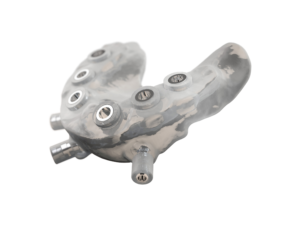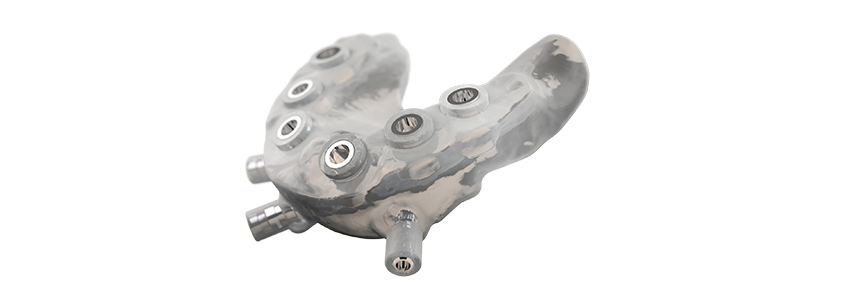Modern dentistry makes use of multiple techniques for inserting dental implants, each technique responding to the specificity of the clinical case. Among the different techniques there is also that of computer guided implantology, let’s see what it is.
Computer guided implantology: how it works
Computer-guided implantology is one of the possible techniques used for inserting dental implants. In summary, the phases that characterize it are as follows:
- Diagnostic imaging with Tac Cone Beam, three-dimensional orthopanoramics;
- Sending of three-dimensional images to a specific software;
- Digital planning of implant surgery;
- Sending data to the dental laboratory for the realization of the specific surgical template;
- Surgery for the insertion of dental implants through the use of the surgical guide.
Phase 1: three-dimensional digital images
 The planning of an implantology intervention with traditional diagnostic images, that is two-dimensional, such as endoral or orthopanoramic 2D radiographs, does not allow the dentist to evaluate some important parameters such as bone thickness and quality, this could lead to a wrong evaluation on type of systems to be inserted.
The planning of an implantology intervention with traditional diagnostic images, that is two-dimensional, such as endoral or orthopanoramic 2D radiographs, does not allow the dentist to evaluate some important parameters such as bone thickness and quality, this could lead to a wrong evaluation on type of systems to be inserted.
The three-dimensional digital images, obtained thanks to digital tomography, allow the dentist to reconstruct the specific anatomy of each patient with detailed information. With this information it will be possible to create reliable models and proceed with computer guided implantology.
Phase 2: planning of the implant surgery intervention
All the digital information collected by the dentist is transferred into special software that can recreate the three-dimensional model of the patient’s anatomy. Thanks to digital reconstruction, it is possible to virtually plan the exact location where the implants will be inserted, taking into account the thickness and quality of the bone.
Having the patient’s anatomy under control allows the dentist to act without interfering with the inferior alveolar nerve or the maxillary sinuses. Once the position of the dental implants has been established, all the information is transferred to laboratories for the realization of the surgical guide.
Step 3: placement of dental implants through the surgical guide

The surgical guide is a mask that is placed in the oral cavity during surgery. In the template there are holes that accurately reproduce the points where the implants must be inserted: it is, using simple words, a guide for the dentist.
Like other implantology techniques, it is performed in flapless mode, ie without the incision of the soft tissues and therefore without particular trauma for the patient, with rapid healing times.
Advantages of computer guided implantology
The advantages of computer-guided implantology are mostly the same advantages of all immediate-loading implantology techniques. In reality, with guided computer surgery, traumatic gum surgery can be avoided in selected cases. The advantages in detail:
- minimally invasive and painless intervention;
- planning of the intervention in the smallest detail with reduction of risks for the patient;
- minimization of bleeding;
- short intervention times;
- reduced healing times and no trauma.
Disadvantages
The surgical guide can interfere with the complete vision of the operative field and can prevent the dentist from having full control in case of unforeseen events during the operation. It is the surgeon who knows when it is advisable to follow this particular protocol.
Even for the computer guided implant technology it is essential to rely on dentists with proven surgical experience.
















